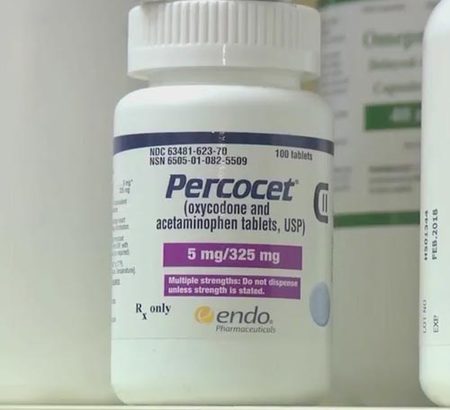$200.00 – $300.00
What is OxyContin?
OxyContin (oxycodone) is an opioid pain medication sometimes called a narcotic.
OxyContin is a strong prescription medicine used when an opioid medicine is needed to manage severe pain enough to require daily around-the-clock, long-term treatment with an opioid, when other pain treatments such as non-opioid pain medicines or immediate-release opioid medicines do not treat your pain well enough or you cannot tolerate them.
OxyContin is not to be used on an as-needed basis for pain that is not around-the-clock.
Warnings
You should not use OxyContin if you have severe asthma or breathing problems, or a blockage in your stomach or intestines.
MISUSE OF OXYCONTIN CAN CAUSE ADDICTION, OVERDOSE, OR DEATH. Keep the medication in a place where others cannot get to it.
Taking oxycodone during pregnancy may cause life-threatening withdrawal symptoms in the newborn.
Fatal side effects can occur if you use OxyContin with alcohol, or with other drugs that cause drowsiness or slow your breathing.
Before taking this medicine
You should not use OxyContin if you are allergic to oxycodone, or if you have:
- severe asthma or breathing problems; or
- a blockage in your stomach or intestines.
You should not use OxyContin unless you are already using a similar opioid medicine and are tolerant to it.
OxyContin should not be given to a child younger than 11 years old.
To make sure this medicine is safe for you, tell your doctor if you have ever had:
- breathing problems, sleep apnea;
- a head injury, or seizures;
- drug or alcohol addiction, or mental illness;
- liver or kidney disease;
- urination problems; or
- problems with your gallbladder, pancreas, or thyroid.
If you use OxyContin while you are pregnant, your baby could become dependent on the drug. This can cause life-threatening withdrawal symptoms in the baby after it is born. Babies born dependent on opioids may need medical treatment for several weeks.
Ask a doctor before using oxycodone if you are breastfeeding. Tell your doctor if you notice severe drowsiness or slow breathing in the nursing baby.
How should I use OxyContin?
Take OxyContin exactly as prescribed. Follow the directions on your prescription label and read all medication guides. Never use oxycodone in larger amounts, or for longer than prescribed. Tell your doctor if you feel an increased urge to take more of oxycodone.
Never share opioid medicine with another person, especially someone with a history of drug abuse or addiction. MISUSE CAN CAUSE ADDICTION, OVERDOSE, OR DEATH. Keep the medication in a place where others cannot get to it. Selling or giving away opioid medicine is against the law.
Stop taking all other around-the-clock opioid pain medicines when you start taking extended-release OxyContin.
Swallow the extened release tablet whole to avoid exposure to a potentially fatal overdose. Do not crush, chew, break, or dissolve.
Never crush or break an OxyContin tablet to inhale the powder or mix it into a liquid to inject the drug into your vein. This can result in death.
You should not stop using OxyContin suddenly. Follow your doctor’s instructions about tapering your dose.
Store at room temperature, away from heat, moisture, and light. Keep track of your medicine. Oxycodone is a drug of abuse and you should be aware if anyone is using your medicine improperly or without a prescription.
Do not keep leftover opioid medication. Just one dose can cause death in someone using this medicine accidentally or improperly. Ask your pharmacist where to locate a drug take-back disposal program. If there is no take-back program, flush the unused medicine down the toilet.
What happens if I miss a dose?
Since OxyContin is used for pain, you are not likely to miss a dose. Skip any missed dose if it is almost time for your next dose. Do not use two doses at one time.
What happens if I overdose?
Seek emergency medical attention or call the Poison Help line at 1-800-222-1222. An oxycodone overdose can be fatal, especially in a child or other person using the medicine without a prescription. Overdose symptoms may include severe drowsiness, pinpoint pupils, slow breathing, or no breathing.
Your doctor may recommend you get naloxone (a medicine to reverse an opioid overdose) and keep it with you at all times. A person caring for you can give the naloxone if you stop breathing or don’t wake up. Your caregiver must still get emergency medical help and may need to perform CPR (cardiopulmonary resuscitation) on you while waiting for help to arrive.
Anyone can buy naloxone from a pharmacy or local health department. Make sure any person caring for you knows where you keep naloxone and how to use it.
What should I avoid while using OxyContin?
Do not drink alcohol. Dangerous side effects or death could occur.
Avoid driving or operating machinery until you know how oxycodone will affect you. Dizziness or severe drowsiness can cause falls or other accidents.
Avoid medication errors. Always check the brand and strength of oxycodone you get from the pharmacy.
OxyContin side effects
Get emergency medical help if you have signs of an allergic reaction to OxyContin: hives; difficult breathing; swelling of your face, lips, tongue, or throat.
Opioid medicine can slow or stop your breathing, and death may occur. A person caring for you should give naloxone and/or seek emergency medical attention if you have slow breathing with long pauses, blue colored lips, or if you are hard to wake up.
Call your doctor at once if you have:
- noisy breathing, sighing, shallow breathing, breathing that stops during sleep;
- a slow heart rate or weak pulse;
- a light-headed feeling, like you might pass out;
- confusion, unusual thoughts or behavior;
- seizure (convulsions);
- low cortisol levels – nausea, vomiting, loss of appetite, dizziness, worsening tiredness or weakness; or
- high levels of serotonin in the body – agitation, hallucinations, fever, sweating, shivering, fast heart rate, muscle stiffness, twitching, loss of coordination, nausea, vomiting, diarrhea.
| Milligrams | 10mg, 15mg, 20mg, 30mg, 40mg, 60mg prolonged release, 80mg prolonged release, 120mg prolonged release |
|---|---|
| Quantity | 100 |
Reviews
There are no reviews yet.
Related products
Antidepressants medication
Lyrica 25mg, 50mg, 75mg, 100mg, 150mg, 200mg, 300mg [30 Capsules]





























Be the first to review “OXYCONTIN”